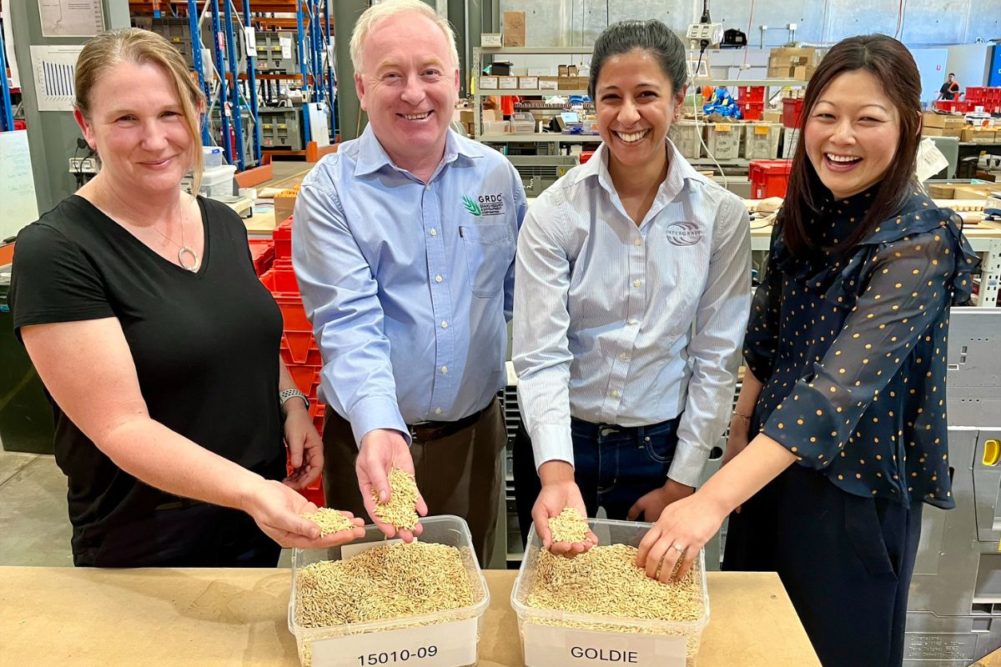PERTH, AUSTRALIA — The Grains Research and Development Corp. (GRDC) has launched an industry-driven Oat Grain Quality Consortium (OGQC) aimed at addressing the need for innovation in oat quality research, informing oat quality classification and market positioning. As part of the initiative, the GRDC will invest A$5.75 million in oats research over five years, while other research and industry partners will contribute A$6.7 million.
The consortium will be led by InterGrain and the South Australian Research and Development Institute (SARDI: the research division of the Department of Primary Industries and Regions SA). These lead organizations will bring together a diverse group of organizations spanning the research, production, processing, and food and beverage manufacturing sectors, each contributing their expertise to drive industry transformation, according to the GRDC.
Other partners in the project include Curtin University, Murdoch University, Edith Cowan University, Agriculture Victoria, Shaanxi Normal University, plus industry partners Unigrain, Wide Open Agriculture, Fancy Plants, Oatly, Sanitarium, Uncle Toby’s, Blue Lake Milling, Quaker, Noumi, Seamild, Grains Australia and Australian Export Grains Innovation Centre (AEGIC).
“We know that the global demand for diverse and nutritious oat-based products is on the rise and there is a clear opportunity for Australian agriculture to lead the way in quality and sustainability,” said Nigel Hart, managing director of the GRDC. “This is why GRDC has initiated and invested in this consortium on behalf of Australian growers.
“This research will benefit the entire Australian oat supply chain by providing breeders with new traits that align with market demands, improving efficiency and reducing costs for processors, and expanding the range of oat-based products that manufacturers can offer consumers globally.
“Ultimately this work aims to position Australian oats as the go-to-product for consumers, both domestically and overseas, which will have significant flow-on benefits for our growers.”
The OGQC’s focus will be centered around three programs of activity, each supporting Australian oat pre-breeding research to understand key oat quality traits.
Program 1 will seek to accelerate the development of an accurate and cost-effective high-throughput measurement method for key oat quality characteristics. This program will be led by InterGrain and co-funded by the WA State Government Processed Oat Partnership program. Specific quality characteristics that will be measured include beta-glucan, protein and oil content, the GRDC said.
Program 2 will explore desirable aroma, flavor and texture compounds for oat food/beverage applications. This program will be led by research partner InterGrain in collaboration with Curtin University, Murdoch University, Edith Cowan University, Agriculture Victoria, Shaanxi Normal University, plus industry partners Unigrain, Wide Open Agriculture, Fancy Plants, Oatly, Sanitarium, Uncle Toby’s, Blue Lake Milling, Quaker, Noumi, Seamild and AEGIC. The GRDC said Program 2 aims to help differentiate Australian oats in the market by providing breeders with information on the genetic variation of taste compounds. It also will provide industry and researchers with insights into desirable aroma, flavor and texture compounds for oats, the GRDC said.
Program 3 will seek to modulate grain oil content of oats to improve suitability for milling and food/beverage ingredient development. This program will be led by research partner SARDI in collaboration with the University of Adelaide, University of South Australia, and InterGrain, plus industry partners Unigrain, AEGIC and Grains Australia Ltd. Specific goals of Program 3 include understanding the constraints that oat grain oil content has on expanding milling processes for improved and novel oat products. The GRDC said researchers through the program plant to establish industry-relevant oil thresholds for specific milling applications.
“Enhancing shelf life and milling efficiency may open new avenues for Australian oats in global markets — something that SARDI will be exploring intently in conjunction with our industry consultative committee and research partners,” said Janine Croser, SARDI’s program leader for crop and pasture improvement.
Oats are a big business in Australia, according to the GRDC, with approximately 1.5 million tonnes of oat grain produced each year in the country. About 25% of oats production is exported, with the remaining 75% used to meet domestic demand in the form of seed, feed and human consumption, the GRDC said.






